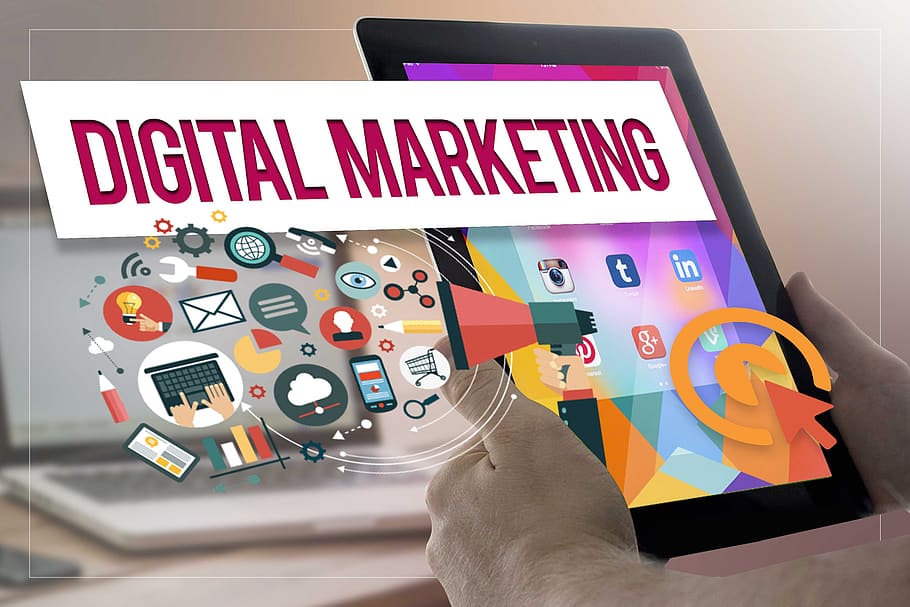In the digital age, the landscape of small business marketing has undergone a seismic shift. The advent of digital technologies has democratized marketing, enabling small businesses to compete on a level playing field with larger corporations. This transformation has not only opened new avenues for growth but also introduced a myriad of strategies to engage with a global audience. This article explores the key facets of small business marketing in the digital age, offering insights into how businesses can unlock their full potential.
Contents
- Embracing the Digital Revolution
- Navigating the Digital Marketing Landscape
- Leveraging Social Media for Engagement
- Email Marketing: Personalizing Customer Connection
- Content Marketing: Telling Your Brand’s Story
- Paid Advertising for Precision Targeting
- Analytics and Insights: Measuring Success
- Challenges and Solutions in Digital Marketing
- Conclusion
Embracing the Digital Revolution
The New Marketing Paradigm
The digital revolution has changed the way businesses approach marketing. Traditional methods have given way to digital strategies of SEO services, driven by the Internet’s expansive reach. This shift requires small businesses to adapt and embrace new tools and platforms to stay relevant and competitive.
The Power of Digital Presence
A robust digital presence is now a cornerstone of any successful marketing strategy. Websites, social media profiles, and online listings form the foundation upon which small businesses can build their brand and engage with customers.
Understanding Your Audience Online
The first step in effective digital marketing is understanding who your audience is and where they spend their time online. Analytics tools can provide deep insights into audience demographics, behaviors, and preferences, guiding businesses in tailoring their marketing efforts.
SEO: Unlocking Organic Reach
Search Engine Optimization (SEO) is critical for enhancing visibility in search engine results. By optimizing website content with relevant keywords, small businesses can attract more organic traffic, thereby increasing their reach and potential customer base.
Leveraging Social Media for Engagement
Choosing the Right Platforms
Not all social media platforms are suited to every business. Selecting the right platforms where your target audience is most active is crucial. Whether it’s Instagram, Facebook, LinkedIn, or Twitter, each platform offers unique opportunities for engagement and branding.
Content Is King
Engaging, high-quality content is the heart of social media success. Through informative blog posts, engaging videos, and interactive posts, businesses can foster a community around their brand, driving loyalty and word-of-mouth referrals.
Email Marketing: Personalizing Customer Connection
Building a Subscriber Base
Email marketing allows for direct, personalized communication with your audience. Building a subscriber list through website sign-ups and promotions enables businesses to nurture leads and keep customers informed and engaged.
Segmentation and Targeted Campaigns
Segmenting email lists based on customer interests and behaviors can significantly increase the effectiveness of email campaigns. Personalized emails cater to individual customer needs, enhancing the likelihood of conversion.
Content Marketing: Telling Your Brand’s Story
Strategic Content Creation
Content marketing involves creating and sharing valuable content to attract and retain a clearly defined audience. By providing content that solves problems, entertains, or educates, small businesses can establish themselves as thought leaders in their field.
Multi-Channel Distribution
Distributing content across multiple channels maximizes reach and impact. Whether through blogs, social media, email newsletters, or podcasts, a multi-channel approach ensures that your content resonates with a broader audience.
Paid Advertising for Precision Targeting
Pay-Per-Click (PPC) and Social Ads
Paid advertising campaigns, including PPC and social media ads, offer an effective way to reach specific segments of your audience. With advanced targeting options, businesses can ensure their message reaches the right people at the right time.
Retargeting to Re-engage
Retargeting campaigns allow businesses to re-engage visitors who have shown interest in their products or services but haven’t converted. By displaying targeted ads to these individuals, businesses can increase conversion rates and maximize ROI.
Analytics and Insights: Measuring Success
Tracking and Analyzing Data
Digital marketing offers the unparalleled advantage of trackable metrics. Through tools like Google Analytics, businesses can measure the success of their marketing efforts, gaining insights into visitor behavior, campaign performance, and more.
Adapting Strategies Based on Insights
The digital landscape is ever-evolving, and so should marketing strategies. By analyzing performance data, businesses can identify what works and what doesn’t, allowing them to adapt their approach and optimize for better results.
Challenges and Solutions in Digital Marketing
Staying Up-to-Date with Digital Trends
The rapid pace of digital innovation can be overwhelming. Small businesses should prioritize continuous learning and possibly collaborate with digital marketing professionals to stay ahead of trends and technologies.
Overcoming Resource Constraints
Limited budgets and resources can constrain small businesses. However, by focusing on high-ROI activities, leveraging free and low-cost tools, and considering outsourcing, businesses can overcome these challenges and achieve their marketing objectives.
Conclusion
The digital age has brought about transformative changes in the way small businesses approach marketing. By embracing digital strategies and leveraging tools like SEO, social media, email marketing, and analytics, small businesses can unlock their potential and compete effectively in the global marketplace. The key to success lies in understanding your audience, creating compelling content, and continuously adapting to the digital landscape’s dynamics. With the right approach, small businesses can not only survive but thrive, carving out their niche and building a loyal customer base in the digital world.
